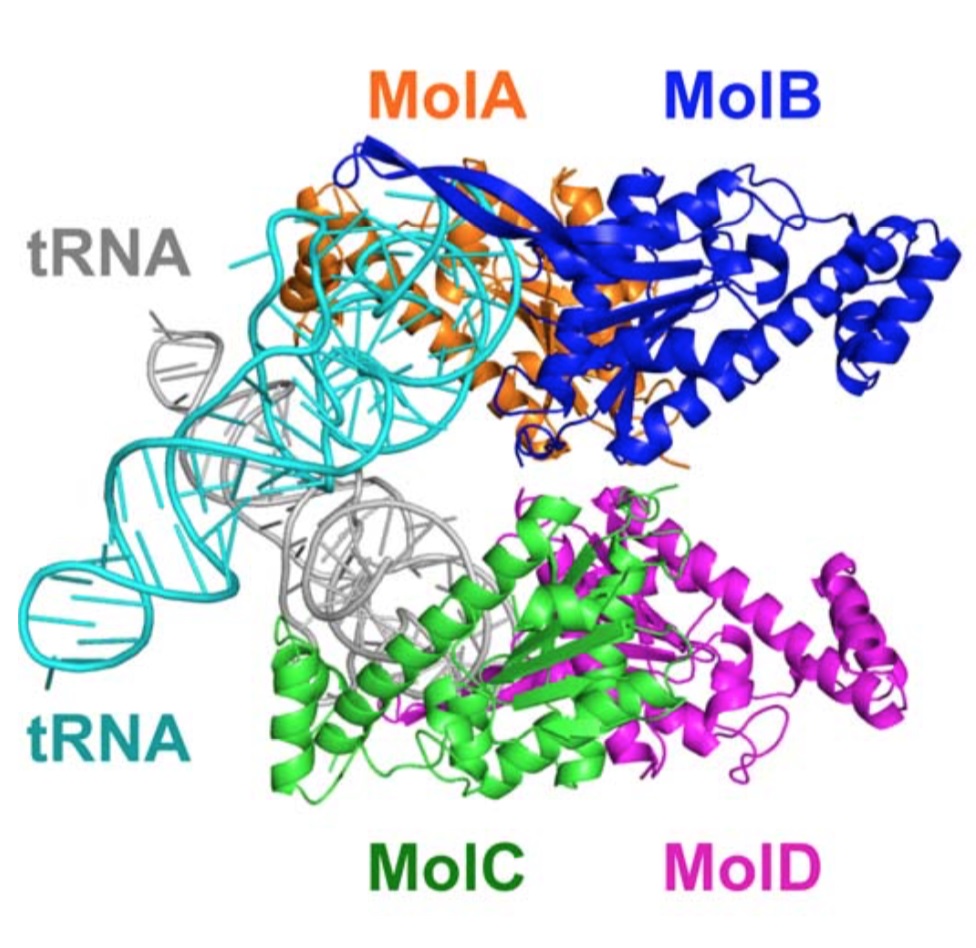Uncovering the mystery of DNA replication
Research Press Release | July 13, 2016
By looking into the mechanism of a backward enzyme, scientists speculate why DNA replication always happens in the forward direction.
Nucleotide chains, such as DNA and RNA, are synthesized by making copies from other chains. The copying process always happens in a “forward” direction, from one particular end to the other. During the process, the two chains of a double-stranded DNA that will be copied are separated and aligned in opposite directions to each other, complicating matters. “When DNA is replicated, one of the two chains can be copied, or synthesized, in a continuous manner while the other chain is synthesized in many fragments that need to be joined later,” says Min Yao from Hokkaido University. “One of the big questions in biology has been why cells don’t have a reverse-direction enzyme so that both chains can be synthesized efficiently.”
Recently, a group of enzymes was discovered, called Thg1-like proteins (TLPs), which were found to add nucleotides in the opposite direction. Examples of adding nucleotides in this direction are rare. TLPs are the exception and add nucleotides in the reverse direction to repair the “opposite end” of damaged RNAs. In a recently published study, Yao and her team used X-ray crystallography to uncover the structure of the TLP/RNA complex. This gave them insight into the complex mechanism that TLPs employ to add nucleotides in the reverse direction.

Structure of the TLP complex with tRNA revealed by X-ray crystrarography
(Kimura S. et al., Science Advances, Mar 25, 2016)
The team speculate that the reverse-direction enzyme is not used in DNA replication because it requires a structurally complicated process.
“By comparing the molecular mechanisms of forward and reverse reactions in more detail, we would like to fully understand the evolutionary context of DNA replication,” says Yao.
Original Article
Kimura S. et al., Template-dependent nucleotide addition in the reverse (3’-5’) direction by Thg1-like protein, Science Advances, Mar 25, 2016.
DOI: 10.1126/sciadv.1501397.
Contact
Professor Min YAO
Laboratory of X-ray Structural Biology
Faculty of Advanced Life Science
Hokkaido University
yao[at]castor.sci.hokudai.ac.jp
Naoki Namba (Media Officer)
Global Relations Office
Office of International Affairs
Hokkaido University
pr[at]oia.hokudai.ac.jp
Tel: +81-11-706-8034
